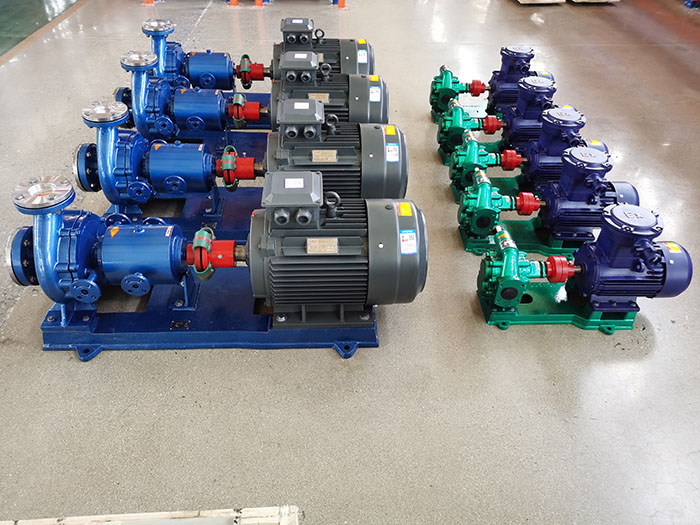Fault Analysis of Gear Oil pump.
1. Oil seal wear and glue seal aging.
The rubber oil seal of the unloading piece is aging and deteriorating, losing elasticity, and losing the sealing and isolation effect on the high-pressure oil cavity and the low-pressure oil cavity, which will produce the oil pressure of the high-pressure oil cavity to the low-pressure oil cavity, which is called "internal leakage", which reduces the working pressure and flow rate of the oil pump.
2. Wear of oil pump shell.
Mainly the wear of the floating shaft sleeve hole (the normal clearance between the gear shaft and the shaft sleeve is 0.09~0.175mm, the maximum must not exceed 0.20mm). The gear works under the action of pressure oil, and the gear tip is close to the oil pump shell, which wears away the low-pressure cavity part of the pump body. Another kind of wear is the circumferential wear of the working face in the shell, which is mainly caused by the dirty oil added, so the oil without impurities must be added.
3. Wear of internal parts of oil pump.
The wear of the internal parts of the oil pump will cause internal leakage. Among them, the leakage area between the floating shaft sleeve and the gear end face is large, which is the main part of the internal leakage. This part of the leakage accounts for about 50% to 70% of the total internal leakage. The volumetric efficiency of the gear pump with wear and tear internal leakage decreases, and the output power of the oil pump is much lower than the input power. The loss is all converted into heat, so it will cause the oil pump to overheat. If the joint plane is pressed, the floating sleeve will cause wear and tear due to a small amount of movement during work, resulting in slow lifting of agricultural tools or can not be lifted, so the floating sleeve must be replaced or repaired.
First of all, we should pay attention to the steering and connection of the gear oil pump, reversal will make the suction direction opposite, the pump and motor to maintain a good alignment, it is best to use flexible connection. Although the gear oil pump has self-priming capacity, there should be oil in the pump before starting (otherwise serious friction loss), and the oil suction height is generally not more than 0.5m. The mechanical shaft seal is a more precise part, so it is necessary to prevent damage to the sealing elements when disassembling and assembling, lubricating oil should be applied on the shaft during installation, and it should be loaded in the correct order, and there should be buoyancy when pushing the ring by hand. Tighten the shaft seal evenly, and the mechanical shaft seal must prevent dry friction. It is not suitable to work under over-rated pressure, which will overload the prime mover, increase the bearing load, deform the working parts, increase friction and leakage, and cause blockage in serious cases. It is necessary to prevent the vacuum at the suction entrance from being greater than the allowable vacuum, otherwise it cannot be inhaled normally, when the suction pressure is too low, cavitation will occur, and the oil will precipitate many bubbles in the low-pressure area, and the flow rate will be reduced. When the bubbles reach the high-pressure area, the air dissolves into the oil again, forming a local vacuum, and the high-pressure oil around will flow at a high speed to fill it. Hydraulic shock is produced, accompanied by violent noise. To maintain a suitable oil temperature and viscosity, the kinematic viscosity should be 25-33mm2/s. If the viscosity is too small, the leakage will increase, and cavitation will occur easily. Excessive viscosity will also reduce efficiency and inhale abnormality to prevent inhalation of air, will reduce the flow rate, and produce noise. The end face clearance has a great influence on the self-priming capacity and efficiency of the gear oil pump, which can be measured by pressing soft lead wire. The sensitivity of high pressure gear oil pump is high, and 150 mesh filter can be used at the suction port.
